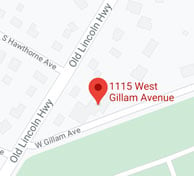Air duct leaks can be a major nuisance in any home or building. Not only do they lead to inefficient heating and cooling, but they can also negatively impact indoor air quality. Understanding the causes of air duct leaks is crucial in order to prevent and address these issues effectively.
Main Causes of Air Duct Leaks
Poor installation
If the ductwork is not properly sealed or connected, it can result in gaps and openings where air can escape. This can occur at various points along the ducts, such as at the joints, connections, or even due to loose or damaged ductwork. Over time, these gaps can become bigger and more significant, leading to substantial air leakage.
Aging and deterioration
As ductwork ages, it can develop cracks, holes, or gaps due to wear and tear. Factors like exposure to extreme temperatures, moisture, and pests can also contribute to the deterioration of ductwork. These openings allow air to leak out, causing your HVAC system to work harder to maintain the desired temperature and resulting in energy waste.
Improper maintenance of air ducts
Neglecting cleaning and inspections can lead to the accumulation of dirt, debris, and even mold inside the ducts. This build-up can cause the ductwork to become clogged or corroded, leading to leaks and reduced airflow. Routine maintenance, including cleaning and sealing of air ducts, is essential to prevent these issues.
Inspecting for air duct leaks is an important step in maintaining the efficiency and functionality of your HVAC system. Here are some effective ways to inspect for air duct leaks.
How to Inspect for Air Duct Leaks
Visual inspection
Start by examining the visible sections of your ductwork, such as those in the basement or attic. Look for any obvious signs of damage, such as visible gaps, cracks, or disconnected joints. Pay close attention to areas where the ductwork is exposed to extreme temperatures or moisture, as these are common places for leaks to occur.
Feel for airflow
Turn on your HVAC system and feel around the ductwork for any noticeable air leaks. Move your hand along the ducts, paying attention to areas where you suspect leaks may be present. If you feel a significant amount of air escaping, it is a strong indication of a leak.
Thermal imaging
Infrared cameras can be used to detect temperature variations along the ductwork, which can indicate air leaks. These cameras can identify areas where the temperature is significantly different from the rest of the ductwork, helping you pinpoint the exact locations of leaks.
Professional inspection
If you suspect extensive or hard-to-reach leaks, it is advisable to hire a professional HVAC contractor to conduct a thorough inspection. They have the necessary tools and expertise to identify and address even the most hidden leaks in your air ducts. They will use tools such as a smoke test and a pressure test.
Smoke test
A professional will turn on your HVAC system and use a smoke tool around suspected areas of leakage. If you notice the smoke being sucked into the ductwork or blowing away from it, it indicates the presence of a leak.
Pressure Test
A professional HVAC technician can perform a pressure test to determine the exact location and severity of air duct leaks. This involves sealing off the registers and pressurizing the duct system with a specialized tool. By measuring the pressure drop, the technician can identify the areas that require sealing or repair.
How to Temporarily Seal a Leak in Your Ductwork
Duct tape
One of the simplest ways to temporarily seal a leak is to use duct tape. This versatile adhesive tape can be applied directly to the leaky area to create a temporary seal. However, it's important to note that duct tape is not a long-term solution and may deteriorate over time due to exposure to temperature changes and humidity.
Foil tape
Foil tape, also known as metal-backed tape, is another option for temporarily sealing duct leaks. This tape is specifically designed for HVAC applications and can provide a more durable and reliable seal compared to regular duct tape. Simply apply the foil tape over the leaky area, ensuring that it covers the entire gap or crack.
Sealant putty
Sealant putty, such as epoxy putty or plumber's putty, can be used to temporarily seal small leaks in ductwork. This putty is a moldable substance that can be shaped and pressed into the leaky area to create a tight seal. Make sure to clean the surface before applying the putty for better adhesion.
Duct sealant
Duct sealant, also known as duct mastic, is a sticky substance that can be used to create an airtight seal. Unlike tape or putty, duct sealant is applied with a brush or a gloved hand, allowing you to cover larger areas or joints. Apply a generous amount of sealant to the leaky area, ensuring that it fills any gaps or cracks.
Consider Professional Duct Sealing
When it comes to duct sealing, it is crucial to seek the expertise of professionals with specialized equipment to ensure a durable and efficient solution. These professionals will thoroughly assess your ductwork, locate all leaks, and provide the necessary repairs or sealing methods to optimize your HVAC system's efficiency. Professional duct sealing guarantees long-lasting outcomes and significant energy savings.
During these consultations, HVAC professionals will evaluate your ductwork, discuss the available sealing options, and offer personalized recommendations based on your specific needs. By properly sealing your ductwork in collaboration with these experts, you can effectively address air duct leaks and enhance the efficiency and indoor air quality of your home or building. Take action now to ensure that your HVAC system operates at its peak performance.
If you live in the Delaware Valley/Greater Philadelphia area and would like to find comfort within your home, visit our website or give us a call at 215 - 245 - 3200 to learn more.





